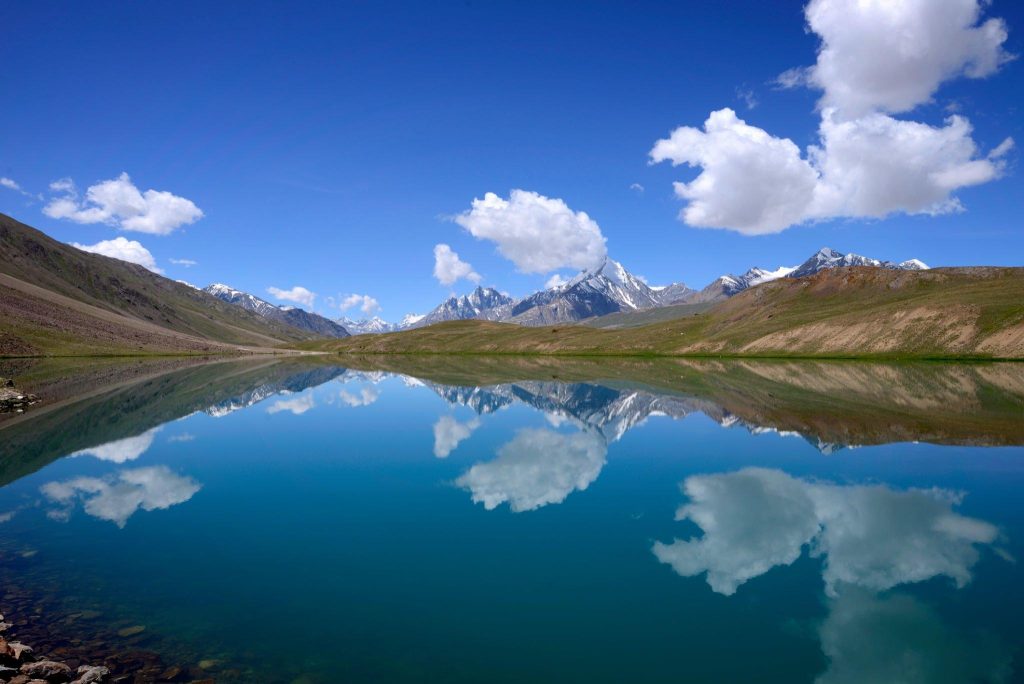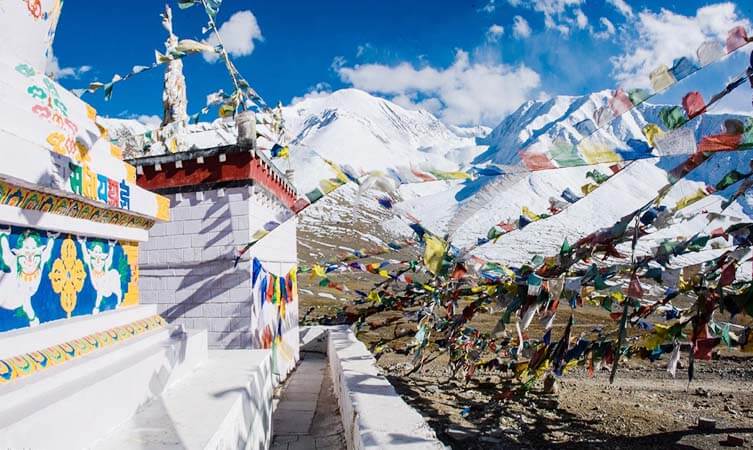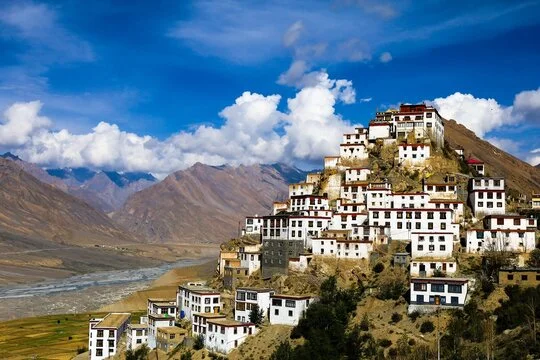Losar Valley Himachal Pradesh: Explore Spiti’s Untouched Beauty
Nestled in the serene landscapes of Spiti, Losar Valley in Himachal Pradesh is a hidden gem for nature lovers and adventure seekers. Situated at the confluence of the Losar and Peeno streams, this picturesque village serves as the last settlement before entering the majestic Kunzum Pass. Surrounded by snow-capped peaks, pristine meadows, and crystal-clear rivers, Losar Valley offers an unmatched experience of tranquility and raw Himalayan beauty. Renowned for its rich Tibetan culture and vibrant festivals, the valley is a gateway to Spiti’s untouched charm. Losar is ideal for trekking, photography, and immersing yourself in the region’s spiritual essence. Whether having an adventure or seeking peace, Losar Valley in Himachal Pradesh promises an unforgettable escape into nature.
Book here Himachal Pradesh Tour Packages
The Best Time to Visit the Losar Valley in Himachal Pradesh
The ideal time to visit Losar Valley in Himachal Pradesh is between May and September, when the weather is pleasant, and the valley comes alive with lush greenery, colorful wildflowers, and clear skies. During these months, the snow melts, revealing the breathtaking beauty of the Spiti region, making it perfect for trekking, photography, and exploring the serene landscapes. For those seeking a winter wonderland, the months from November to February offer a magical experience, with the valley covered in snow. However, access can be challenging during this period due to extreme weather and road closures. To truly enjoy the beauty and adventure Losar Valley offers, plan your visit during summer or early autumn for the best experience.
Weather Conditions of Losar Valley in Himachal Pradesh
Losar Valley, located in the high-altitude Spiti region of Himachal Pradesh, experiences diverse and extreme weather conditions. Summers, from May to September, are mild and pleasant, with temperatures ranging between 15°C and 25°C, making it the best time to visit. During these months, the snow melts, and the valley bursts into life with clear skies, lush greenery, and ideal conditions for trekking and sightseeing. Winters, from October to February, are harsh and frigid, with temperatures dropping to -10°C or lower. The valley transforms into a snow-covered wonderland, but becomes difficult to access due to extreme cold and road closures. Monsoons, in July and August, bring occasional light showers, but the region largely remains dry. Summer is the most favorable time to explore the Losar Valley.
How to Reach Losar Valley in Himachal Pradesh
1. By Road: Losar is well-connected by road via the Manali-Leh Highway and Spiti Valley routes. From Manali, take the route through Rohtang Pass and Kunzum Pass (accessible from May to October). Alternatively, from Shimla, you can travel via Kinnaur and the Spiti Valley. Regular buses and taxis operate along these routes.
2. By Air: The nearest airport is Bhuntar Airport near Kullu, around 185 km from Losar. From the airport, hire a taxi or take a bus to reach the valley.
3. By Train: The nearest railway station is Kalka Railway Station, approximately 470 km away. From Kalka, you can travel to Losar via Shimla and Kinnaur by road.
Top 5 Best Places to Visit in the Losar Valley in Himachal Pradesh
1. Losar Village

Perched at an altitude of around 4,000 meters, Losar Village is the serene gateway to Spiti Valley. Surrounded by snow-capped peaks and lush fields in summer, it offers a peaceful retreat far from crowded tourist spots. The traditional Tibetan-style homes and warm hospitality give a glimpse into local culture. It’s an ideal base for acclimatizing before heading deeper into Spiti. The crisp mountain air and minimal noise make it a perfect spot for relaxation.
2. Chandratal Lake

Just a few hours from Losar, Chandratal Lake is a mesmerizing high-altitude lake known as the “Moon Lake.” Its turquoise waters reflect the sky and nearby peaks, creating stunning views throughout the day. Trekkers and campers flock here for its surreal beauty and peaceful ambiance. Though the road can be rugged, the destination is worth every bump. Sunsets here are particularly breathtaking and often feel otherworldly.
3. Kunzum Pass

Located near Losar, Kunzum Pass sits at 4,551 meters and connects Lahaul and Spiti valleys. The panoramic views of snow-laden peaks and colorful prayer flags fluttering in the wind make it a spiritual and scenic spot. There’s also a small temple dedicated to Goddess Kunzum Devi, where travelers seek blessings for a safe journey. It’s a favorite stop for bikers and adventurers crossing the Himalayas. The crisp, cold air and dramatic landscapes are unforgettable.
4. Kibber Wildlife Sanctuary

Not far from Losar, this sanctuary is a haven for wildlife lovers and photographers. Home to the elusive snow leopard, blue sheep, and Himalayan ibex, it’s a high-altitude ecosystem like no other. Trekking through the rugged terrain offers glimpses of rare flora and fauna. The sanctuary also provides spectacular views of deep valleys and towering cliffs. It’s an adventurous detour for those seeking both thrill and nature.
5. Key Monastery

One of the oldest and most iconic monasteries in Spiti, Key Monastery is perched dramatically on a hilltop. Though it’s about an hour’s drive from Losar, it’s well worth the visit for its stunning location and spiritual vibes. Monks chant in candle-lit halls as the scent of incense fills the air. The monastery also offers panoramic views of the Spiti River and valley. Visitors often stay a while just to soak in the peaceful energy.
Tips for traveling to the Losar Valley in Himachal Pradesh
1. Plan According to the Season: Visit between May and September for pleasant weather and accessible roads. Avoid winters unless you’re prepared for extreme cold and road closures.
2. Carry Warm Clothing: Even in summer, temperatures can drop significantly at night. Layered clothing, thermal wear, and sturdy boots are essential.
3. Stay Hydrated and Acclimatize: The high altitude can cause altitude sickness. Stay hydrated and take time to acclimatize before engaging in strenuous activities.
4. Check Road Conditions: Roads to Losar, especially through Kunzum Pass, can be tricky. Check weather updates and road conditions before traveling.
5. Stock Up on Essentials: Carry cash, medicines, and snacks as ATMs and stores are limited in the area.
Conclusion
Losar Valley in Himachal Pradesh is a serene and picturesque destination that perfectly blends natural beauty, cultural richness, and adventure. Whether you’re trekking through scenic trails, exploring vibrant Tibetan culture, or simply soaking in the breathtaking Himalayan views, this hidden gem in the Spiti Valley offers unforgettable experiences. With its tranquil charm, welcoming locals, and unique traditions, Losar Valley is a must-visit for travelers seeking peace and adventure in equal measure. Plan wisely, respect the local culture, and prepare for an enriching journey to this Himalayan paradise.
Book here Himachal Pradesh Tour Packages
People also ask about the Losar Valley in Himachal Pradesh
1. Where is Losar Valley located?
Losar Valley is in the Spiti region of Himachal Pradesh, near the Kunzum Pass, at an altitude of about 4,000 meters.
2. What is the significance of Losar Village?
Losar Village is the first settlement after Kunzum Pass and is known for its Tibetan culture, traditional homes, and serene landscapes.
3. What is the weather like in Losar Valley?
Losar experiences mild summers (15°C to 25°C), harsh winters (as low as -10°C), and minimal rainfall, typical of the high-altitude Spiti region.
4. How can I reach Losar Valley?
You can travel by road via Manali or Shimla. The nearest airport is Bhuntar, and the nearest railway station is Kalka, with further travel by road.
5. What is Losar Valley famous for?
Losar Valley is famous for its natural beauty, Tibetan culture, trekking trails, and proximity to attractions like Kunzum Pass and Chandra Tal Lake.
6. What are the main activities in the Losar Valley?
Popular activities include trekking, photography, mountain biking, exploring monasteries, and experiencing local festivals.
